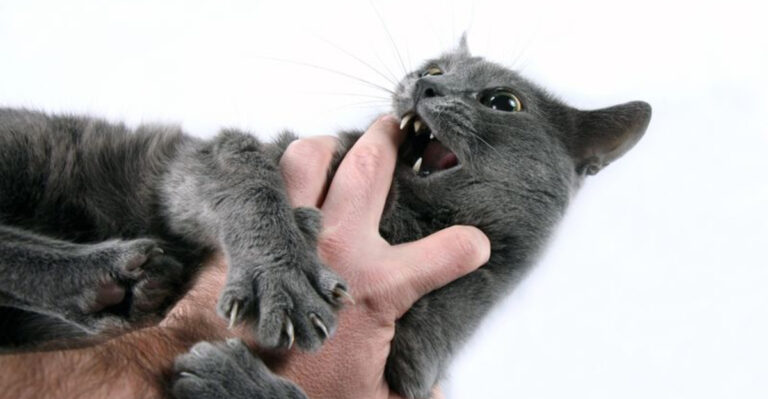12 Warning Signs Of Canine Dementia Every Dog Owner Should Know

Dog dementia, also known as canine cognitive dysfunction, is a condition that affects many senior dogs, resulting in confusion and disorientation.
As pet owners, it’s crucial to recognize and understand the signs that may indicate your furry friend is experiencing this condition. Early detection can lead to better management and an improved quality of life for your pet.
1. Disorientation In New Environments
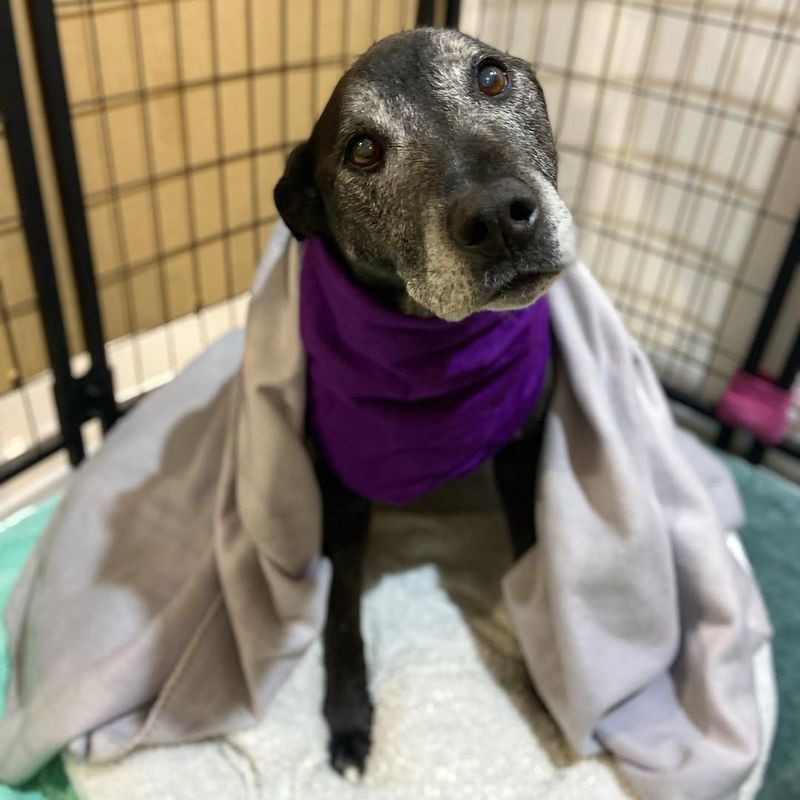
Dogs suffering from dementia may struggle with new or unfamiliar environments. They may become overly confused, trying to navigate spaces they once knew well or even appearing lost in their own home.
This disorientation can make trips to the vet or new locations difficult, so it’s important to create calm, familiar environments to help ease their anxiety.
2. Loss Of Memory
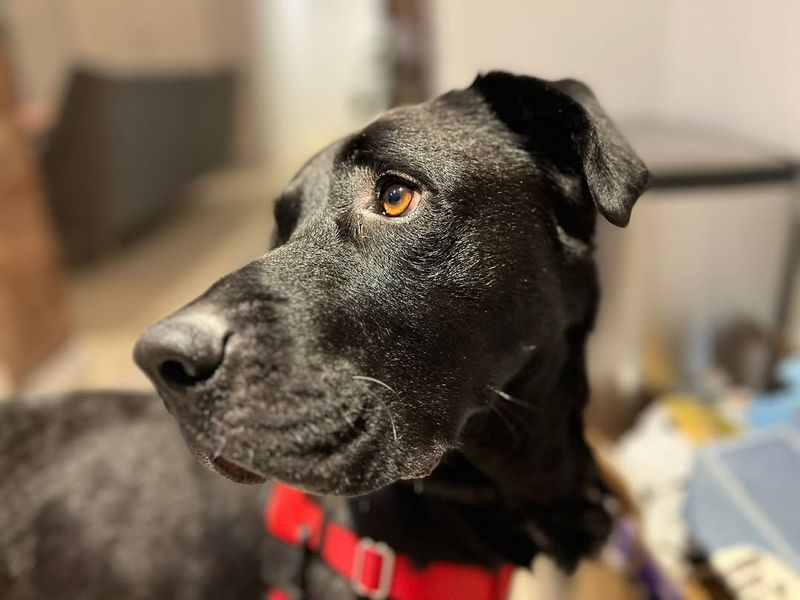
Another sign of canine dementia is memory loss. Dogs may forget commands they once knew, or they may have difficulty remembering people or pets they’ve lived with for years.
The inability to recall familiar routines or locations can be particularly disorienting for both the dog and the owner. Patience and gentle reminders can help your dog adjust, even as their memory fades.
3. Changes In Sleep Patterns

Dogs with dementia often experience changes in their sleep patterns. They may sleep more during the day but become restless or confused at night, possibly waking up and wandering around aimlessly.
This disruption of the sleep-wake cycle can be particularly exhausting for pet owners.
Providing a calming environment and sticking to a consistent routine can help mitigate these disturbances.
4. Disorientation And Confusion
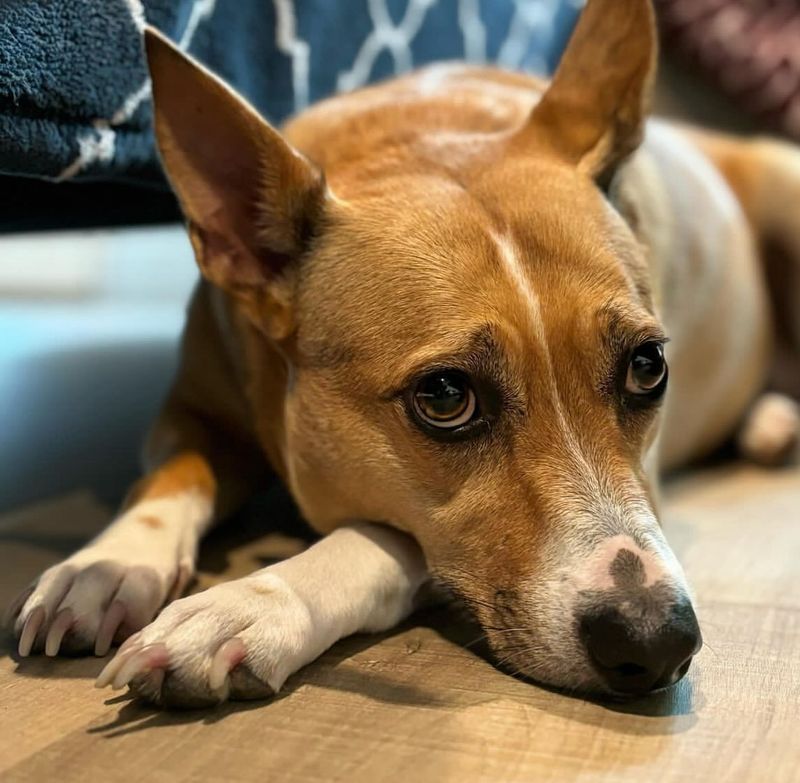
As dementia sets in, many dogs may begin to show signs of disorientation and confusion. They might appear lost in familiar places, walking in circles, or staring blankly at walls.
This can be distressing for both the dog and the owner, but it’s important to remain patient and understanding.
These behaviors stem from cognitive decline, and with proper care, your dog can still live comfortably despite these challenges.
5. Loss Of Interest In Activities

A previously active and playful dog may suddenly lose interest in activities they once loved, such as playing fetch or going for walks.
This loss of interest is one of the hallmark signs of canine dementia, as cognitive function declines.
Keeping activities simple and providing gentle stimulation can help, but it’s important to respect your dog’s pace and energy levels.
6. “Bathroom” Accidents

An affected dog may begin to have accidents in the house, even if they were previously house-trained. This is due to the cognitive decline affecting their ability to recognize the need to go outside or the proper places to eliminate.
Regular bathroom schedules, easy access to outdoor areas, and positive reinforcement can help manage this issue.
7. Increased Anxiety Or Restlessness

As cognitive dysfunction sets in, dogs may become more anxious or restless, pacing, whining, or showing signs of agitation without an obvious cause.
Their ability to understand their environment and the people around them diminishes, leading to feelings of insecurity. Providing comfort and creating a safe, quiet space can help alleviate some of their anxiety.
8. Changes In Social Interactions

Dogs with dementia may exhibit changes in how they interact with people and other pets. They might become more withdrawn or show aggression due to confusion or fear.
On the other hand, some dogs may become overly affectionate or clingy, seeking more attention than usual. Understanding their altered behavior and giving them extra care can help them feel more comfortable.
9. Repetitive Behaviors

Repetitive behaviors, such as chasing their tail, licking, or circling, are common in dogs suffering from dementia. These behaviors are often a result of the dog’s inability to break out of repetitive thought patterns.
While frustrating, these actions are an indication of cognitive dysfunction and may require increased monitoring to prevent injury or self-harm.
10. Decreased Response To Commands

As dogs with dementia experience cognitive decline, they may begin to ignore commands or show slower reactions to familiar cues.
This doesn’t mean they are being stubborn or disobedient—it’s simply a result of their mental decline. Patience and consistency in training are essential, but understanding that their ability to respond is changing will help you adapt.
11. Altered Eating Habits

Changes in eating habits can be another sign of canine dementia. Some dogs may start to forget their feeding routine or may lose interest in food altogether.
Others may eat more than usual due to confusion or an inability to recognize when they are full. Monitoring their diet closely and providing a consistent feeding schedule can help manage these changes.
12. Vocalization Changes
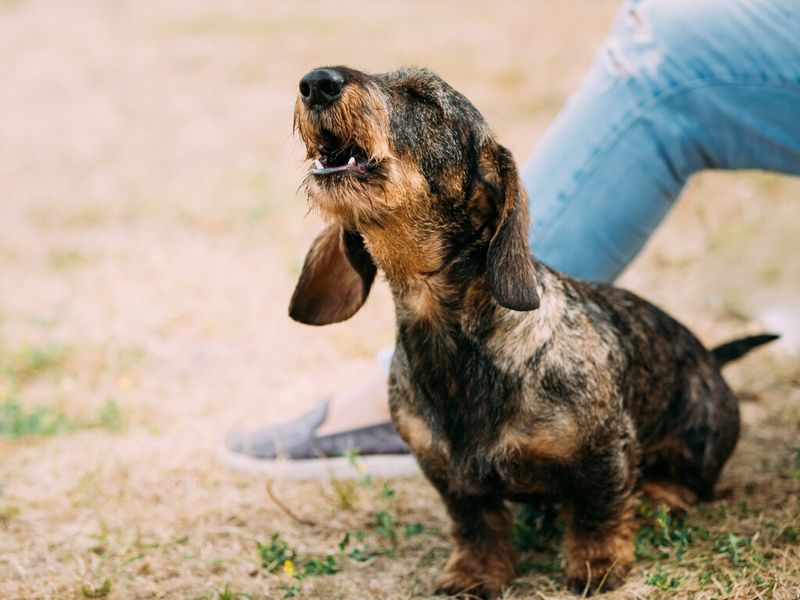
Dogs with dementia may start to vocalize more, barking or howling without apparent reason. This may happen because they are feeling disoriented or anxious.
If your dog has always been quiet, a sudden increase in vocalization could be a sign that they are experiencing confusion or distress. Offering comfort and reassurance can help reduce excessive barking.




